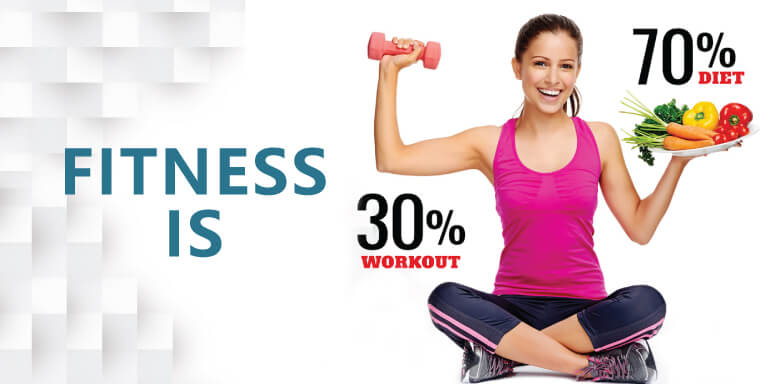
Schools are a key environment for healthy eating, according to health educators. Children in school consume a large portion of their daily caloric requirements. Proper nutrition during childhood and adolescence promotes proper growth and development and prevents chronic conditions such as obesity and diabetes. Additionally, proper nutrition can support cognitive development as well as reduce absenteeism. There are many ways to promote healthy eating in the school environment.
A school nutrition education program helps students develop a healthy eating habit and builds critical thinking skills. It gives information on healthy foods and how to select them. It also lists resources that can be used to help you eat healthy and cook well. The Dietary Guidelines are guidelines for a healthy diet that includes daily exercise and moderate alcohol intake. The health education program assists students in making informed decisions about what they eat, and also provides resources for the food industry.

It is important for health professionals to emphasize the importance nutrition plays in maintaining a person's mental well-being. Many people have mental health problems due to poor nutrition and diet. Many people are unaware of these issues and it is important to highlight how nutrition can impact mental health. Education about healthy eating can help to prevent eating disorders as well as other lifestyle problems. Not only is it about improving your physical fitness, but it can also improve your self-awareness.
Preschoolers can learn how to make healthy choices by creating a nutrition education program. It can include behavior change techniques like motivational tool and can even be gamified. The Define phase of a nutrition program should start with a baseline understanding of the nutrition environment. Developing the program is crucial, but it must be fun and easy to implement. There are many things to consider when implementing a health education plan.
In school, educate the children about healthy eating. It is vital to stress the importance food plays in daily life. It is vital that children are taught how to eat healthy foods in order to have optimal health. Furthermore, children must be taught how food should be prepared and how it should be eaten. Furthermore, school meals should promote social and emotional connections between children and adults. It should not only include nutrition education in schools but also include a comprehensive curriculum that integrates all aspects of the food system.

However, the effect of a nutritional education program in children's attitudes toward food has not been examined in the same study. However, Fitter Critters, which encourages healthy eating and positive attitudes, has been shown to improve self-efficacy and positivity in a few studies. The researchers noted that children who play Fitter Critters are more likely have healthier eating habits. Another study indicated that the games increased the intake of vegetables and fruits among students.
FAQ
How can my blood pressure be controlled?
Find out the causes of high blood pressure first. Next, you must determine the cause and take steps to decrease it. This could be as simple as eating less salt, losing weight, taking medications, etc.
It is important to ensure that you get enough exercise. You can also walk if you don’t have the time.
You should join a gym if you are unhappy with your exercise routine. A gym that has other members who are motivated by your goals will be a good choice. It's easier to stick to an exercise routine when you know someone else is going to see you at the gym.
How do I get enough vitamins for my body?
Most of your daily vitamin requirements can be met by diet alone. However, if you are deficient in any particular vitamin, taking supplements can help. You can purchase a multivitamin that includes all of the vitamins you need. Or you can buy individual vitamins from your local drugstore.
Talk to your doctor if you have concerns about your nutritional intake. You can find vitamins K and E in dark green leafy vegetable such as spinach, kale and turnip leaves, as well a variety of sweet potatoes and sweet potatoes.
Ask your doctor if you're not sure how many vitamins you should take. Based on your medical history, and your current health status, your doctor will recommend the right dosage.
What are 10 healthy habits?
-
Every day, eat breakfast.
-
Don't skip meals.
-
You should eat a balanced diet.
-
Get plenty of water.
-
Take good care of your body.
-
Get enough sleep.
-
Avoid junk food.
-
Do some exercise every day.
-
Have fun
-
Meet new people.
What's the difference between fat or sugar?
Fat is an energy source from food. Sugar is a sweetener found in fruits, vegetables, and other foods. Both sugars and fats have the same calories. Fats have twice the calories of sugars, however.
Fats are stored in the body and contribute to obesity. They cause cholesterol buildup in arteries which may lead to heart attacks and strokes.
Sugars provide instant energy and are rapidly absorbed by the body. This causes blood glucose to rise. High blood glucose levels can be dangerous because it increases the risk of developing type II diabetes.
What is the problem with BMI?
BMI stands for Body Mass Index. This is a measure of body fat that is calculated based on height or weight. The following formula is used to calculate BMI:
Weight in kilograms divided with height in meters.
The result is expressed in a number between 0 - 25. Scores between 0 and 25 indicate obesity. A score of 18.5 indicates overweight. A score of 23 indicates obesity.
A person who weighs 100 kilograms and is 1.75m tall will have an BMI of 22.
Do I have to count calories?
You might wonder, "What's the best diet for me?" or "is counting calories necessary?" This depends on your health and lifestyle.
The Best Diet - Which One Is Right To You?
My current health, my personal goals and lifestyle will determine the best diet for me. There are many diets out there, some good and some bad. Some diets work for some people, while others are not. What can I do to make the right choice? How can I make the right choice?
This article aims at answering these questions. The article starts by introducing the many types of diets currently available. Then we will discuss the pros & cons of each kind of diet. We'll then discuss how to choose which one is best for you.
Let's look at some of the main types of diets to get started.
Diet Types
There are three main types. Low fat, high proteins, and ketogenic. Let's look at each one briefly.
Low Fat Diets
A low fat diet is a diet that restricts the amount of fats consumed. This is achieved through reducing intakes of saturated fats (butter and cream cheese, for example). You can replace them with unsaturated oils (olive oil and avocados) A low fat diet is often recommended for those who want to lose weight quickly and easily. This diet can cause constipation, heartburn, and stomach problems. A person may also experience vitamin deficiencies if they don't get enough vitamins.
High Protein Diets
High protein diets discourage carbohydrates and encourage the use of proteins. These diets often have higher levels of protein than most other diets. These diets are meant to increase muscle mass, and burn more calories. Unfortunately, they can't provide adequate nutrition for those who eat regularly. Also, they tend to be very restrictive, so they aren't suitable for everyone.
Ketogenic Diets
Ketogenic diets are also known as keto diets. They are high fat and moderately carbohydrate and protein-rich. They are commonly used by athletes and bodybuilders, as they allow them train harder and more frequently without getting tired. You must adhere to all side effects, including fatigue, headaches, nausea and headaches.
Is cold a sign of a weak immune response?
There are two types of people in the world: those who love winter and those that hate it. It doesn't really matter whether you love winter or loathe it. You might be wondering why it makes you miserable.
The truth is that our bodies are built to work best when it's warm. Our bodies were designed to thrive in hot weather because this is where the majority of our food sources are.
However, our environment is quite different than that of our ancestors. We spend more time indoors and are often exposed to extreme temperatures (cold or heat) and eat processed foods rather than fresh.
Because of this, our bodies have become accustomed to extremes. This means that we feel tired, sluggish and even sick when we venture outside.
There are ways to combat these effects though. Staying hydrated is one way to combat this. If you drink plenty of water, you'll help keep your body properly hydrated and flush toxins from your system.
You must also ensure that you are eating healthy foods. Consuming healthy food helps maintain your body's optimal temperature. This is especially beneficial for those who spend extended periods of time inside.
Take a few minutes every morning to meditate. Meditation can help you relax your mind, body and soul. This makes it easier to manage stress and illnesses.
Statistics
- WHO recommends reducing saturated fats to less than 10% of total energy intake; reducing trans-fats to less than 1% of total energy intake; and replacing both saturated fats and trans-fats to unsaturated fats. (who.int)
- WHO recommends consuming less than 5% of total energy intake for additional health benefits. (who.int)
- This article received 11 testimonials and 86% of readers who voted found it helpful, earning it our reader-approved status. (wikihow.com)
- nutrients.[17]X Research sourceWhole grains to try include: 100% whole wheat pasta and bread, brown rice, whole grain oats, farro, millet, quinoa, and barley. (wikihow.com)
External Links
How To
What does "vitamin" actually mean?
Vitamins are organic compounds found naturally in food. Vitamins aid us in absorbing nutrients from the food we eat. Vitamins cannot come from the body so food must provide them.
There are two types if vitamins: water soluble, and fat soluble. Water soluble vitamins dissolve easily in water. These include vitamin C (thiamine), Vitamin B1 (riboflavin), Vitamin B2 (riboflavin), Vitamin B3 (niacin), Vitamin B6 (pyridoxine), Vitamin C, B1 (thiamine), Vitamin B2 (riboflavin), Vitamin B3 (niacin), and Vitamin B6 (pyridoxine). Fat-soluble vitamins can be stored in the liver or in fatty tissue. Examples include vitamin D, E, K, A, and beta carotene.
Vitamins can be classified by their biological activity. There are eight major groups of vitamins:
-
A - essential for normal growth and maintenance of health.
-
C – essential for proper nerve function.
-
D - Vital for healthy bones and teeth
-
E is necessary for good vision, reproduction.
-
K - Essential for healthy muscles and nerves.
-
P - vital for building strong bones andteeth.
-
Q - aids digestion and absorption of iron.
-
R - Red blood cells are made from red blood cells.
The recommended daily allowance (RDA), for vitamins, varies depending upon age, gender, or physical condition. The U.S. Food and Drug Administration has established the RDA values.
For example, the RDA for vitamin A is 400 micrograms per dayfor adults 19 years or older. Because it is essential for the development of the fetus, pregnant women should consume 600 micrograms per daily. Children ages 1-8 require 900 micrograms per day. Infants below one year old require 700mg per day. But, between 9 months to 12 months, the amount drops to 500mg per day.
Children aged between 1-18 years require 800 micrograms of sugar per day, while overweight children need 1000 micrograms. Children who are underweight receive 1200 micrograms every day to meet their nutritional requirements.
Children ages 4-8 years who have been diagnosed with anemia need 2200 micrograms per day of vitamin C.
Adults over 50 years of age need 2000 micrograms per day for general health. Women who are pregnant or breastfeeding need 3000 micrograms per day due to increased nutrient requirements.
Adults over 70 require 1500 micrograms each day, since they lose around 10% of their muscle mass every decade.
Women who are pregnant and lactating need more nutrients than the RDA. Pregnant and breastfeeding women require 4000 micrograms each day during pregnancy and 2500 Micrograms each day after delivery. Breastfeeding moms need 5000 micrograms each day when breastmilk production occurs.